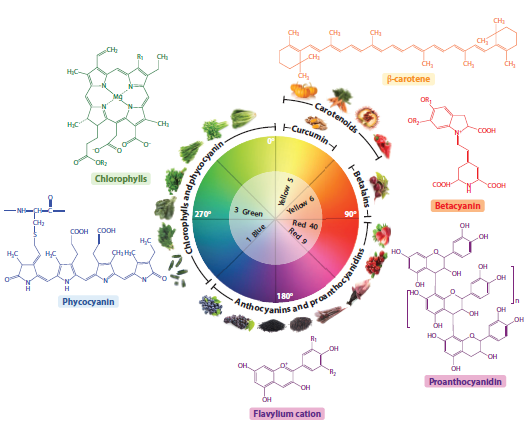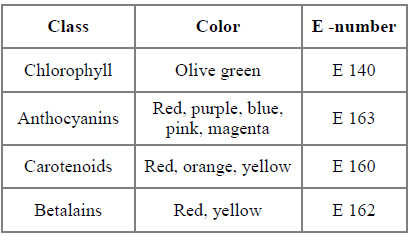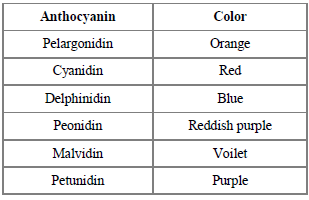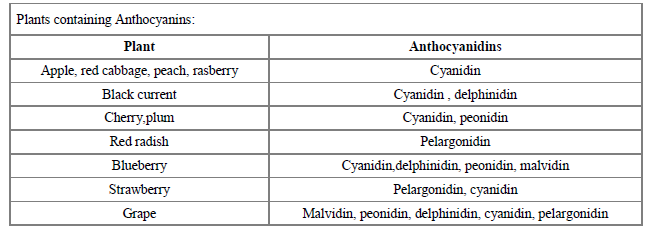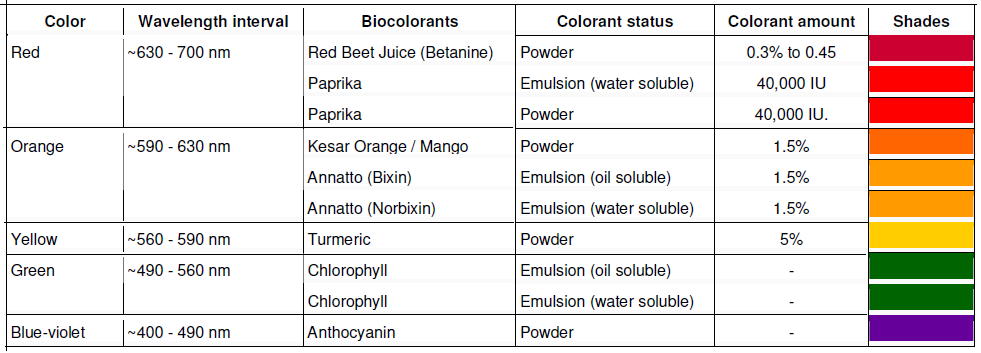Food colours are standard in our everyday lives, and they may even be found in meals and drinks we wouldn’t anticipate. Food colours are added to food or drink to modify the hue to make it more palatable. Natural food colours, synthetic food colours, and mixed food colours are the three food colours. Food colours are employed in commercial food manufacturing
Natural Color Extracts for Foods & Beverage Formulation
Introduction
Food colours are standard in our everyday lives, and they may even be found in meals and drinks we wouldn’t anticipate. Food colours are added to food or drink to modify the hue to make it more palatable. Natural food colours, synthetic food colours, and mixed food colours are the three food colours. Food colours are employed in commercial food manufacturing and home cooking to persuade consumers to buy a product based on its visual appeal. It improves the product’s taste, texture, and appearance while preserving its flavour and freshness. Any dye, pigment, or chemical that gives Colour when added to food and drink is a food colouring or colour additive. They are available in liquids, powders, gels, and pastes. Food colouring is used in both commercial and household food manufacturing. Food colourants are also utilized in cosmetics, medicines, home craft projects, and medical gadgets, among other non-food, uses natural food colours, artificial food colours and contemporary trends are discussed in this article.
Market Analysis
The global market for Natural Food Color Ingredients was valued at USD 4864.9 million in 2019. The market will be valued at USD 5481.5 million by the end of 2026, with a CAGR of 1.7 % from 2021 to 2026. In 2019, India’s natural food colours industry was expected to be worth USD 74.09 million. It is predicted to reach USD 92.96 million by 2027, with a CAGR of 3.90 % across the area from 2020 to 2027. It is attributable to the expanding population and increased consumer awareness of health, expected to increase the industry. As people become increasingly aware of the detrimental health effects of synthetic food colours, demand for natural food colours is growing. Artificial food colours enhance the appeal of food. Brightly coloured meals pique the curiosity of consumers, particularly youngsters. Children who are fed processed food-flavoured eatables are more likely to develop attention deficit hyperactivity disorder. These behavioural changes are more common in youngsters who consume higher levels of artificial food colours.
Plant natural colours
Traditional raw and processed food colourants have been derived from natural pigments found in wild plants. Food and beverage nutrition experts suggest natural plant colours are healthy and add to the overall sensory attribute of the food. Figure 1 shows how several typical pigments compare in terms of colour and chemical structure. (1)
Figure 1. Colour and chemical structure compare four typical natural pigments: anthocyanins, betalains, carotenoids, and phycocyanins.
Table 1: Plant Natural Color
2.1 Betalains
Betalains are nitrogen-containing, water-soluble plant pigments found in most Caryophyllales plants. Betalains may be found in various plant components, including flowers, leaves, stems, and bracts. Violet betacyanins and yellow betaxanthins are the two types of betaxanthins. The pH range 5–6 is ideal for optimum betalain stability. When betanin solutions are stored in a low-oxygen environment, pigment degradation is minimized when stored in an air environment. Because the effects of light exposure are minimal in anaerobic settings, betalain light-driven degradation is oxygen dependant. Temperature is the most critical element influencing betalain stability during food preparation and storage. Table 2 shows some examples of plants that contain betalains.
Table 2: Plants containing Betalains
2.2 Chlorophyll
Chlorophylls are oil-soluble pigments that are responsible for plants’ distinctive green hue. Porphyrins or tetrapyroles chelated with a central magnesium atom make up the structure of chlorophylls. Heat, light, oxygen, acids, and enzymes are all very sensitive to chlorophyll, causing rapid breakdown and colour change. They thrive in alkaline pH ranges of 7-9. In an acidic pH, it becomes unstable. When a plant’s cell membrane is exposed to light or heat, it degenerates, producing acids that lower the pH. The primary cause of the chlorophyll colour change from green to olive-brown is acids and Mg-dechelatase, an enzyme present in algae and plants. These alterations are caused by the loss of a central magnesium atom in the chlorophyll structure, replaced by hydrogen ions, resulting in the transition of native chlorophylls into pheophytin, an olive-brown kind. Other enzymes that degrade chlorophyll and induce colour change include chlorophyllase and oxidative enzymes, including lipoxygenase, chlorophyll oxidase, and peroxidase. The plant-based beverage market requires this pigment to provide Colour and nutrition to many types of drinks.
2.3 Carotenoids
Plant pigments having 40 carbon atoms are known as carotenoids. Carotenoids are yellow-orange-red pigments present in all higher plants. Carotenoids are divided into two types: carotenes, which contain only carbon and hydrogen, and xanthophylls, which include carbon, hydrogen, and oxygen. Because carotenoids may be converted into retinol in the body, they contain provitamin A action. It is more stable between the pH ranges of 4.0 and 6.0. Carotenoids are degraded mostly by oxidation and isomerization events, which result in a reduction in the redness and yellowness of plant pigments.
Table 3: Plant sources of carotenoids
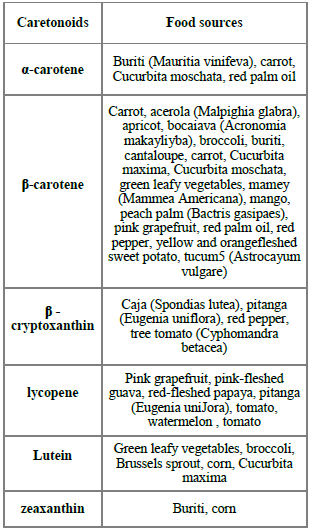
2.4 Anthocyanins
Anthocyanins are water-soluble plant pigments. Many fruits and vegetables have blue, purple, red, and orange colours because of them. The quantity and location of hydroxyl and methoxy groups on the basic anthocyanidin skeleton determine the variety of anthocyanins. If hydroxyl groups predominate, the Colour will take on a bluish hue; if methoxyl groups predominate, the Colour will become redder. Anthocyanin colour stability is influenced by various factors, including pH, temperature, light, co-pigments, enzymes, oxygen, and sugars. The crimson flavylium cation is the single predominating equilibrium species in high acidity environments. As the flavylium cation is hydrated to the colourless carbinol form by nucleophilic attack of water, increasing the pH reduces the flavylium cation’s colour intensity and concentration. When the pH rises even higher, the carbinol form gives way to the colourless chalcone via ring-opening. Food and beverage development use Anthocyanins to a considerable extent due to its neutral chemical composition and excellent Colour it provides to the food.
Table 4: Colors linked with common anthocyanins
Table 5: Common sources of anthocyanins [2]
Colour Appearance
It’s vital to remember that a single colouring agent may not provide the intended result; the background colour and nearby coloured substances significantly impact the colour appearance. Product designs that need blue or green limit the colour palette to just approved colours. Carmine can produce a bluish-purple, but it cannot make a pure blue. Compared to the brilliant hue created by the FD&C-yellow, annatto or turmeric has a cheese hue or an eggy tone. Nowadays, fluorescent colours are also essential in the food industry as consumers favour foods to glow under conditions. Turmeric is a very fluorescent spice that is often used in cooking. The physical and chemical qualities of a food product usually limit the colourant options. A list of available shades for food-grade bio-colourant is presented in Table 6.
Table 6. A wide range of food-grade biocolorants
Research on natural food colours
1. Natural Color Extraction from Black Tea Waste
Table 1 compares the extracted Colour’s physicochemical parameters with commercial brown Colour available on the local market. Although the total solid of commercial Colour was higher than that of tea extracted Colour, there was no significant difference in density. Commercial Colour has nearly seven times the amount of tea extracted in full Colour but no tannin or antioxidant properties. As a result, replacing the tea extracted Colour in food and colouring can provide health benefits to consumers. Permitted food colours include natural plant extracts in many forms.
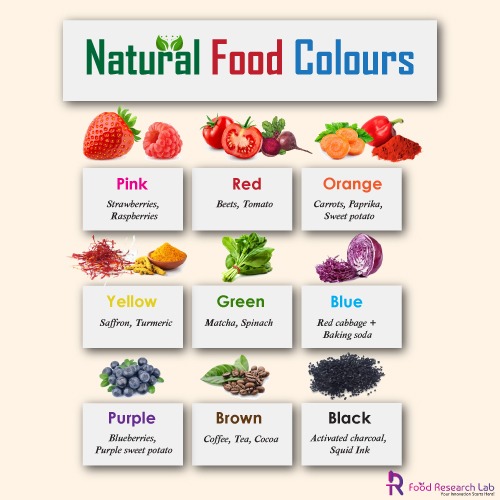
2. Carotenoids from mandarin epicarp for bakery products
The carotenoid lipid extracts derived from the tangerine epicarp might be used as a natural colouring ingredient in bakery items such as cakes and bread, thereby reducing the need for tartrazine.
3. Anthocyanins from Hibiscus sabdariffa calyces for natural food colourants
The calyx of Hibiscus sabdariffa is high in cyanidin/delphinidin-based anthocyanins. In 1 g of the dried calyx, up to 23.83 2.44 mg of the desired anthocyanins may be measured. The most effective procedure, UAE, yielded 51.76 3.70 mg anthocyanins/g extract.
4. Phycocyanin—A natural blue colourant from dried spirulina biomass
The wild blue colourant phycocyanin is isolated from the liquid biomass of Arthrospira platensis, blue-green algae known as spirulina. Phycocyanin can be extracted from biomass in 3 hours at room temperature using just phosphate buffer (pH 7.5, 100 mM).
Conclusion
Colour is an essential aspect of any food item since it improves its attractiveness and acceptance. Although the world’s plant resources are vast, only a tiny portion has been used to yet. Natural colours are pretty susceptible to food processing processes. Natural pigments must be stabilized before being used as food colourants, which is the most challenging hurdle to overcome. Unless extracts are added separately, these colours naturally in plants cannot be considered natural food additives. Further extensive research and scientific investigations are required to determine natural dye-yielding resources’ true potential and availability.
As a consequence of customer demand for natural pigments instead of synthetic colourants, the food business that develops and manufactures raw food colours is rapidly expanding. Some food colourants are identified by their chemical names (canthaxanthin), while others are identified by their sources (fruit juice or vegetable juice). Biocolorants with chemical names can be easily manufactured using less expensive biotechnological sources. Coffee husks and Eugenia myrtifolia fruits are two examples of potential anthocyanin sources in the future. Syngium cumini, an Indian black plum, has been discovered as a possible source of natural food-grade biocolorant. Large-scale fermentation of natural biocolorants may need biotechnology. Even when the source of the biocolorant is known, organic farming and integrated crop management are required to produce the food-grade product. Table 8 shows strategic biotechnology applications for the development of natural food-grade biocolorants.
Food Research Lab is a global Contract Reasearch and Development Food, Beverages & Nutraceutical Lab providing solutions to Food, Beverages and Nutraceuticals (F, B&N) industries worldwide. In simple words, we are food and beverage consultants that can assist you in identifying which natural food colour is suitable for your product.

Let’s create something Innovative and Delicious together
Food Research Lab strives for excellence in new Food, Beverage and Nutraceutical Product Research and Development by offering cutting edge scientific analysis and expertise.

